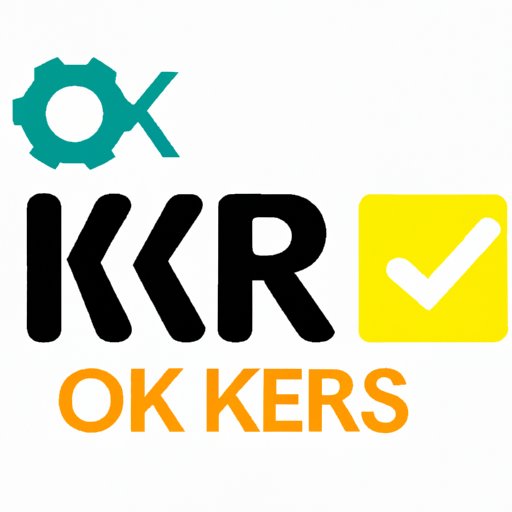
Introduction
When it comes to achieving business success, having clear and measurable goals is crucial. One powerful framework that businesses can use for goal-setting is Objectives and Key Results, or OKRs. In this article, we’ll walk you through everything you need to know about OKRs: what they are, why they’re important, and how to use them to transform your business.
The Complete Guide to OKRs in Business: Everything You Need to Know
OKRs are a goal-setting framework that help businesses align individual, team, and company goals towards a common objective. They are rooted in transparency and communication, and provide a clear way to measure progress towards goals. OKRs are designed to be ambitious, specific, and time-bound, and can be used to set goals at all levels of an organization.
The key components of an OKR include:
- An objective: a qualitative statement that defines a goal
- Key results: specific, measurable milestones that track progress towards the objective
- Action items: the specific actions needed to achieve the objective and key results
Successful companies that use the OKR framework include Google, Intel, and LinkedIn.
Why OKRs are Critical to Business Success: An Overview
OKRs offer many benefits to businesses, including:
- Improved focus and alignment: By setting clear objectives and key results, everyone in the organization knows what they are working towards, and how their work fits into the bigger picture.
- Adaptability: OKRs can help businesses quickly pivot when market conditions change or new opportunities arise, by allowing them to shift their focus to new objectives and key results.
- Employee motivation: By giving employees a clear sense of purpose and a way to measure their progress, OKRs can contribute to higher levels of employee engagement and motivation.
Transforming Business Goals with OKRs: A Step-by-Step Guide
Here’s a step-by-step guide to setting and achieving effective OKRs:
- Start with your company’s overall mission and vision. What are you trying to achieve in the long run?
- Set high-level objectives that align with your mission and vision. What do you need to accomplish in the next year or quarter to move closer to your long-term goals?
- Identify key results that will help you measure progress towards your objectives. These should be specific, measurable, and time-bound.
- Break down your objectives and key results into actionable items. What specific actions do you need to take to achieve your goals?
- Regularly track progress towards your objectives and key results, and adjust your actions as needed to stay on track.
It’s also important to note that individual OKRs should be aligned with team and company-wide objectives, to ensure that everyone is working towards the same goals.
How OKRs Help Businesses Achieve More with Less Effort
OKRs can help businesses achieve more with less effort by promoting prioritization and streamlining decision-making. By focusing on the most important objectives and key results, businesses can avoid wasting time on tasks that don’t contribute to their overall goals. Some businesses have achieved significant results through OKRs, such as Google, which attributed OKRs to helping achieve a 10x improvement in their core search engine product.
The Power of OKRs in the Modern Workplace: Enhancing Employee Engagement and Productivity
OKRs can also be a powerful tool for enhancing employee engagement and productivity. By giving employees a clear sense of purpose and a way to measure their progress, OKRs can contribute to higher levels of motivation and engagement. Additionally, because OKRs are designed to be transparent and collaborative, they can foster a sense of teamwork and a shared sense of purpose among employees. For example, Adobe reported that their use of OKRs led to a 30% increase in employee engagement.
Conclusion
OKRs are a valuable framework for businesses of all sizes and industries. By aligning individual, team, and company goals towards a common objective, and providing a clear way to measure progress, OKRs can help businesses achieve more with less effort, adapt to changes in the marketplace, and improve employee engagement and productivity. With the step-by-step guide provided in this article, you have everything you need to start transforming your business goals using the power of OKRs.





